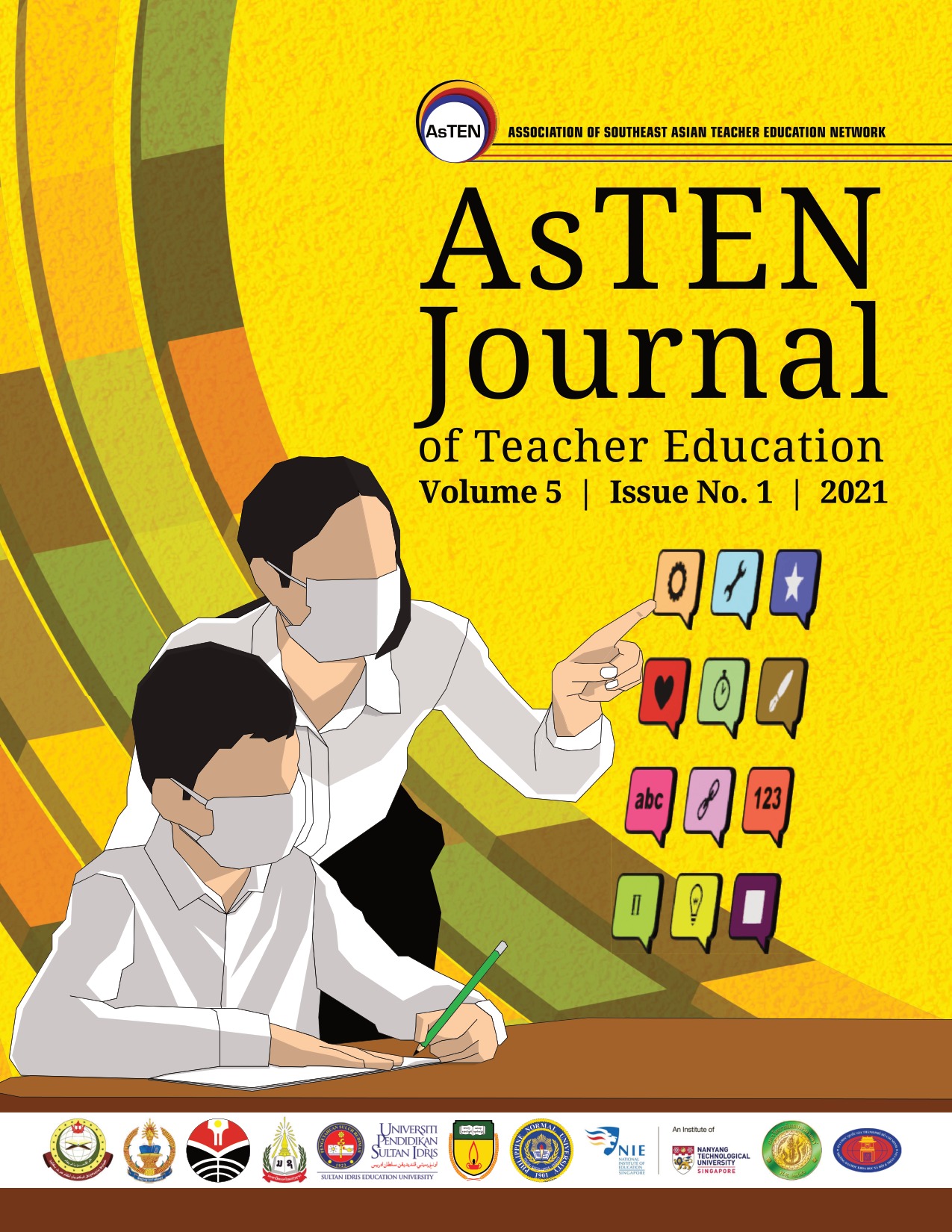Effect of Cognitive and Appetitive Faculties in the Numerical Proficiency of Grade 10 Students: A Correlational Study
Main Article Content
Keywords
appetitive faculty, cognitive faculty, numerical proficiency
Abstract
The study aimed to determine whether the appetitive and cognitive faculty of a learner significantly correlate to their numerical proficiency. Using simple random sampling, five sections of Grade-10 were chosen as respondents consisting of 120 Grade 10 junior high school learners. Using the descriptive-correlation design, survey questionnaires and an objective test were used in gathering data. The data gathered were analyzed using mean, standard deviation and Pearson correlation coefficient. The findings disclosed that the mean of appetitive faculty of junior high school learners is high. The level of cognitive faculty of junior high school learners is moderate. Meanwhile, the numerical proficiency level of the junior high school students is proficient. The findings also showed that there is a significant relationship between the appetitive and cognitive faculty of the junior high school students. However, no significant relationship was found between appetitive faculty and numerical proficiency, and cognitive faculty and numerical proficiency.
Publication History
Version of Record online: December 29, 2021
Manuscript accepted: December 27, 2021
Manuscript revised: December 23, 2021
Manuscript received: May 4, 2021
References
Cariño, E.L. (2019). 2018 National achievement test (NAT) 6, 10 & 12 results and analysis. https://region2.deped.gov.ph/wp-content/ uploads/2019/05/2018-NATIONALACHIEVEMENT-TEST-NAT-610-12- RESULTS-AND-ANALYSIS-.pdf
Corpuz, B., & Salandanan, G. (2013). The fundamental equipment of a learner. Principles of teaching I. pp 3 – 7.
Côté-Lussier, C., & Fitzpatrick, C. (2016). Feelings of safety at school, socioemotional functioning, and classroom engagement. Journal of Adolescent Health, 58(5), 543-550.
Cragg, L., & Gilmore, C. (2014). Skills underlying mathematics: The role of executive function in the development of mathematics proficiency. Trends in neuroscience and education, 3(2), 63-68.
Davis, S. (2016, April 5). How does instinct affect a child’s behavior and learning? Good News Christian News. Retrieved January 20, 2018, from https://www.goodnewsfl.org/instinct-affect-childs-behavior-learning/.
De Hevia, M. D., Izard, V., Coubart, A., Spelke, E. S., & Streri, A. (2014). Representations of space, time, and number in neonates. Proceedings of the National Academy of Sciences of the United States of America, 111(13), 4809- 4813. doi:10.1073/pnas.1323628111
Dunlosky, J., Rawson, K. A., Marsh, E. J., Nathan, M. J. & Willingham, D. T. (2013). Improving students’ learning with effective learning techniques: Promising directions from cognitive and educational psychology. Psychological Science in the Public Interest, 14(1), 4–58
Hampton, D. (2021, June 17). What’s the difference between feelings and emotions? The Best Brain Possible. Retrieved October 12, 2017, from https://thebestbrainpossible.com/ whats-the-difference-between-feelings-andemotions/
Hornung, C., Schiltz, C., Brunner, M., & Martin, R. (2014). Predicting first-grade mathematics achievement: The contributions of domain-general cognitive abilities, nonverbal number sense, and early number competence. Frontiers in psychology, 5, 272.
Hunter, M. (2013). Imagination may be more important than knowledge: The eight types of imagination we use. Review of Contemporary Philosophy, (12), 113-120.
Immordino-Yang, M. H. (2015). Emotions, learning, and the brain: Exploring the educational implications of affective neuroscience (the Norton series on the social neuroscience of education). WW Norton & Company.
Judson, G. (2016). Imagination misunderstood. ImaginED: education that inspires learners of all ages. September 2016 Issue. Retrieved October 20, 2017 from http://www.educationthatinspires.ca/2016/02/09/ imagination-misunderstood/
Kim, C., Park, S. W., & Cozart, J. (2014). Affective and motivational factors of learning in online mathematics courses. British Journal of Educational Technology, 45(1), 171-185.
Libertus, M. E., Odic, D., & Halberda, J. (2012). Intuitive sense of number correlates with math scores on college-entrance examination. Acta psychologica, 141(3), 373-379.
Maguire, R., Egan, A., Hyland, P., & Maguire, P. (2017). Engaging students emotionally: The role of emotional intelligence in predicting cognitive and affective engagement in higher education. Higher Education Research & Development, 36(2), 343-357.
Nunes, T., Bryant, P., Barros, R., & Sylva, K. (2012). The relative importance of two different mathematical abilities to mathematical achievement. British Journal of Educational Psychology, 82(1), 136-156.
Passolunghi, M. C., Cargnelutti, E., & Pellizzoni, S. (2019). The relation between cognitive and emotional factors and arithmetic problem-solving. Educational Studies in Mathematics, 100(3), 271-290.
Rozek, C. S., Hyde, J. S., Svoboda, R. C., Hulleman, C. S., & Harackiewicz, J. M. (2015). Gender differences in the effects of a utility-value intervention to help parents motivate adolescents in mathematics and science. Journal of Educational Psychology, 107(1), 195. http://dx.doi.org/10.1037/a0036981
Shabgou, M., & Daryani, S. M. (2014). Towards the sensory marketing: stimulating the five senses (sight, hearing, smell, touch and taste) and its impact on consumer behavior. Indian Journal of Fundamental and Applied Life Sciences, 4(1), 573-581.
Shields, P. M., & Rangarajan, N. (2013). A playbook for research methods: Integrating conceptual frameworks and project management. New Forums Press.
TIMSS (2016). TIMSS & PIRLS International Study Center, Lynch School of Education, Boston College and International Association for the Evaluation of Educational Achievement (2016). Retrieved January 20, 2018 form http://timss2015.org/#/?playlistId=0&videoId=0
Tosto, Maria G., Stephen A. Petrill, Sergey Malykh, Karim Malki, Claire Haworth, Michele MM Mazzocco, Lee Thompson, John Opfer, Olga Y. Bogdanova, and Yulia Kovas. “Number sense and mathematics: Which, when and how?” Developmental psychology 53, no. 10 (2017): 1924.
VanDerHeyden, A.M., Broussard, C., Snyder, P. George, J., Lafleur, S.M. & Williams, C. (2011). Measurement of kindergartners’ understanding of early mathematical concepts. School Psychology Review, 40, 296–306. World Economic Forum (2017). The global competitiveness index report. Retrieved from https://www.weforum.org/reports/the-global-competitiveness-report-2017-2018.
Zientek, L.R, Ebrar, Z., Ozel, Y. Fong, C., & Griffin, M. (2013). Student success in developmental mathematics courses. 990-1010. https://doi.org/10.1080/10668926.2010.491993
Zilbersheid, U. (2013). The historical character of human nature in Freud’s theories. American Journal of Psychanalysis. 184-204.


